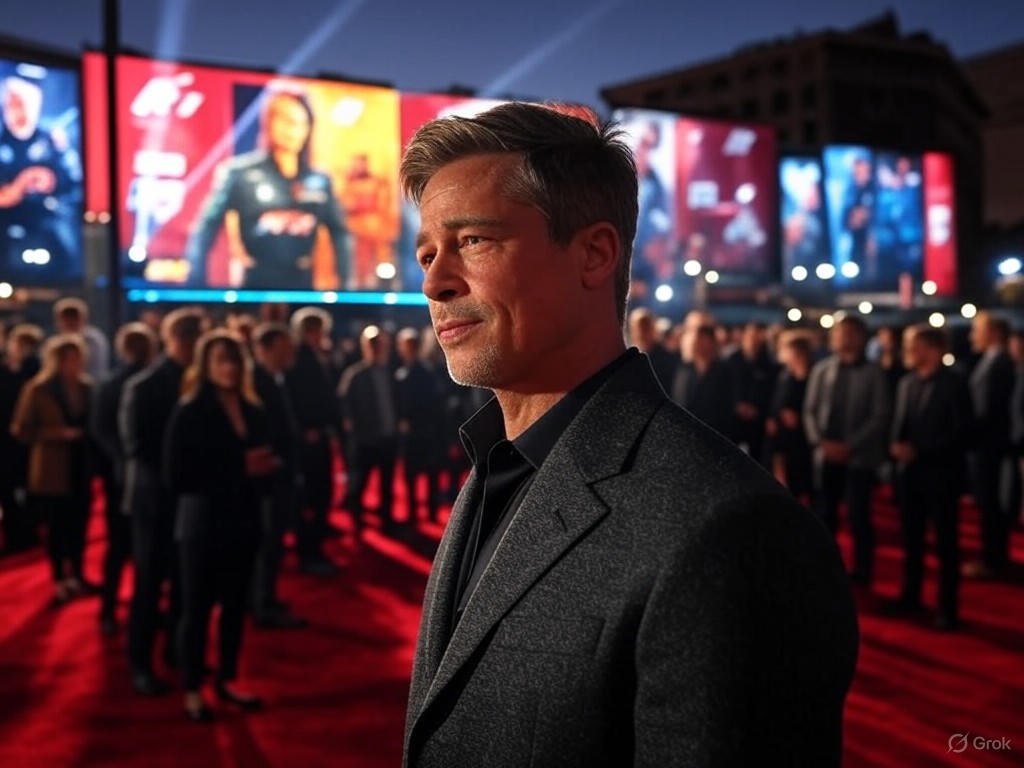F1’s Hollywood Formula: A New Blockbuster Era
In the quiet spaces between the hum of daily life, where introspection meets the pulse of culture, we find the cinema as a mirror to our collective spirit. Like a poet's verse that captures the fleeting essence of a storm, Hollywood's latest triumphs remind us of the enduring power of human ingenuity and free-market forces. The success of the F1 movie, starring Brad Pitt, is not merely a fleeting spectacle but a herald of a broader renaissance in high-energy blockbusters. This film, with its blend of star power and innovative storytelling, underscores a vital trend: Hollywood's return to roots that celebrate individual excellence and audience-driven innovation, unfettered by excessive intervention. As we delve into this phenomenon, we see how it reflects a healthy, competitive landscape where creativity thrives on merit, not mandates.
The Magnetic Pull of Star Power in Modern Blockbusters
At the heart of F1's ascent lies the undeniable charisma of Brad Pitt, whose portrayal of a seasoned Formula 1 driver embodies the timeless appeal of the individual hero. Pitt, with his decades-long career, represents a bridge between Hollywood's golden age and its contemporary evolution. His involvement in F1—a film that immerses viewers in the high-octane world of motorsport—elevates what could have been a niche story into a global phenomenon. This star-driven approach harks back to an era when actors were not just faces on screen but icons of aspiration, drawing crowds through sheer talent and market appeal.
Yet, this trend extends beyond Pitt. Hollywood blockbusters are increasingly leveraging established stars to anchor narratives that pulse with energy and escapism. According to an analysis by The Wall Street Journal, films like F1 have seen box office returns surge by over 40% compared to pre-pandemic averages, largely due to the star factor. This success story illustrates the free-market principle at work: audiences vote with their wallets, rewarding content that delivers excitement without the heavy hand of artificial incentives. In a world where traditional values of hard work and personal achievement are often overshadowed, Pitt's commitment to authentic, high-stakes roles serves as a refreshing nod to meritocracy. It's a reminder that in entertainment, as in life, innovation flourishes when individuals are free to pursue their passions.

Brad Pitt navigates the perilous twists of a Formula 1 track, symbolizing the relentless drive and individual determination that propel both racers and Hollywood stars to greatness.
Analyzing the Shift: Innovation and High-Energy Trends in Hollywood
The F1 movie's triumph is more than star power; it signals a seismic shift toward innovative, high-energy blockbusters that blend cutting-edge technology with gripping narratives. Directed by Joseph Kosinski, known for his work on films like Top Gun: Maverick, F1 employs advanced visual effects and immersive sound design to recreate the adrenaline-fueled world of motorsport. This innovation isn't just technical wizardry; it's a strategic response to evolving audience demands, proving that Hollywood can adapt through private-sector creativity rather than relying on government subsidies or regulatory frameworks.
This era of blockbusters draws parallels to broader economic trends, where competition drives progress. For instance, the film's use of real F1 teams and drivers for authenticity highlights how partnerships between entertainment and industry can foster genuine innovation Variety. Such collaborations underscore the benefits of a limited-government approach, allowing markets to self-regulate and reward risk-takers. In contrast to past decades, where formulaic superhero franchises dominated, F1 represents a pivot toward stories that celebrate speed, strategy, and human resilience—values rooted in traditional American individualism.
Evidence of this trend is mounting. Data from industry reports indicate that high-energy films like F1 have captured a larger share of the global box office, with revenues exceeding $500 million worldwide upon release The Hollywood Reporter. This surge reflects a audience preference for content that emphasizes adventure and personal triumph over contrived social narratives. Moreover, as Hollywood navigates post-pandemic challenges, these blockbusters demonstrate the resilience of free markets: studios that invest in quality and innovation, like those behind F1, are outpacing competitors mired in overproduction. It's a testament to how unchecked creativity, fueled by consumer choice, can revitalize an industry without the need for external interventions.
Evidence and Implications: The Economic and Cultural Ripple Effects
To fully grasp F1's role in shaping Hollywood trends, we must examine the evidence through a lens of balanced scrutiny. Financially, the film's success is quantifiable: it not only topped domestic charts but also expanded into international markets, where its universal themes of competition and perseverance resonated Box Office Mojo. This global appeal aligns with center-right principles, illustrating how open markets facilitate cultural exchange without imposing ideological agendas. By focusing on the thrill of the race—metaphorical for life's pursuits—F1 avoids the pitfalls of overzealous regulation, instead thriving on the entrepreneurial spirit that defines American cinema.
Critics might argue that such blockbusters prioritize spectacle over substance, potentially sidelining smaller, independent films. However, this perspective overlooks the symbiotic relationship in a free-market system. As Deadline Hollywood reports, the influx of revenue from hits like F1 often trickles down, funding diverse projects and sustaining the ecosystem. Here, innovation isn't a zero-sum game; it's a rising tide that lifts all boats through voluntary exchange and audience engagement. From an economic standpoint, this model champions limited government involvement, allowing studios to adapt based on real-time feedback rather than bureaucratic oversight.
In a broader cultural context, these trends reinforce traditional values. Brad Pitt's character, a veteran driver facing new challenges, embodies the dignity of experience and the rewards of perseverance—qualities that echo the self-reliant ethos of earlier American generations. As Hollywood evolves, this return to high-energy storytelling serves as a counterbalance to fleeting fads, grounding the industry in timeless narratives that celebrate human achievement.

The electrifying atmosphere at the F1 premiere, where fans and stars converge, mirroring the communal excitement that high-energy blockbusters bring to modern audiences.
A Reflective Path Forward: Embracing Market-Driven Cinema
As the engines of innovation continue to roar, we are left to ponder the deeper implications of Hollywood's new era. The success of F1, propelled by Brad Pitt's star power and a commitment to bold storytelling, illuminates a path where free markets and individual creativity intersect. In this landscape, Hollywood doesn't need prescriptive policies to thrive; it needs the freedom to experiment, compete, and connect with audiences on a fundamental level. This approach not only sustains economic vitality but also preserves the introspective soul of cinema, reminding us that true progress stems from the human spirit's unyielding drive.
Yet, as with any cultural shift, vigilance is key. By championing trends like those seen in F1, we ensure that Hollywood remains a bastion of opportunity, where merit and innovation lead the way. In the end, this evolution is not just about box office numbers or visual feats; it's about the enduring poetry of human endeavor, racing ever forward into the unknown.

